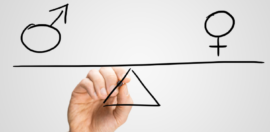Changemakers - Priscilla Brice-Weller
6 August 2012 at 9:50 am
 Priscilla Brice-Weller from Not for Profit organisation All Together Now is profiled in Changemakers – a regular column which examines inspiring people and their careers in the Not for Profit sector.
Priscilla Brice-Weller from Not for Profit organisation All Together Now is profiled in Changemakers – a regular column which examines inspiring people and their careers in the Not for Profit sector.
In 2010, Priscilla Brice Weller started a new Not for Profit organisation All Together Now to promote the prevention of racism in Australia. This was largely born out of her belief that for Indigenous and non-Indigenous Australians to reconcile, racism must be addressed as it underlies so many policies and interpersonal behaviours that are holding Australia back. All Together Now is the only national Not for Profit organisation in Australia that focuses solely on addressing racism.
What are you currently working on in the organisation?
The biggest project I’m managing at the moment is One Parramatta, which is a local short film project funded by Department of Immigration and Citizenship. Our aim is to encourage young people in the Parramatta region to reflect on their behaviour towards people of different ethnicities and cultural backgrounds. We’re doing this by filming 7 vox-pop style films in Parramatta over one year, with each focussing on an aspect of cultural diversity and racism. Each film is shown at Parramatta Event Cinemas during the ad segments, and on YouTube. There are over 20 creative, business, and community groups involved so keeping everybody informed about where we’re up to is quite a challenge, let alone the subject matter!
What drew you to the Not for Profit sector?
I started out working as a typist in a stockbroker in Brisbane, and later was promoted to the position of research assistant and worked in a couple of investment banks in London. After a few years of doing that, I decided on a change of direction because I wanted a more meaningful work life. I trained as a web designer, and then volunteered to build a website for a few Not for Profits to get some work experience. By the time I returned to Australia, I had a few website builds on my CV and successfully applied for a job implementing the first redesign of the Oxfam Australia website.
Working at Oxfam was an eye-opener for me. Part of my job as Web Manager was to read the web content before it was published so I knew where on the website it should go and what images could help promote each story, so by reading about all the work Oxfam was doing I learned a lot about human rights, overseas development and modern Indigenous issues – the kind of stuff we were never taught in school. This informal education helped me to connect what I was learning with my own life experiences and ultimately I became more passionate about the content than about developing websites!
How long have you been working in the Not for Profit sector?
I’ve been working as a permanent employee in the sector since my first role at Oxfam in late 2003.
I think, though, that volunteering is just as valid a definition of “work” as paid employment. My first long-term volunteering role was working as a shop assistant in a Lifeline store in Brisbane’s Fortitude Valley. I finished high school during the recession in the early 90s and found it hard to get my first fulltime job, so in the meantime I volunteered for a day or two a week to get out of the house.
Nowadays although I work full-time managing All Together Now, I haven’t yet secured enough operational funding to pay myself more than one day a week, so technically I guess I’m still a volunteer most days.
What do you like best about working in your current organisation?
I love that we have an opportunity to demonstrate that antiracism initiatives can be fun, innovative, positive and engaging. I also love that we bring together some really talented and creative people, like academics, people in the marketing, media and ad industries, senior business executives, policy people, and community development managers to work together to prevent racism.
I’m always being asked …
Often when I tell people where I work, they’ll tell me a story about an incident they witnessed and then ask whether it was racist or not. I try to get people to answer their own question, but often they just want somebody to give them an answer, they seem reluctant to try and learn from the experience.
I also get asked things like whether I think Australia is racist. I find this question frustrating because racism is a complex issue. I find it difficult to simplify an answer to that question down to a soundbite, but it often feels like people are after a ‘yes’ or ‘no’ answer.
However, although I get asked tricky questions I try not to close down the conversation. It’s important to get people talking about racism, because that in itself encourages people to learn more about racism and rank and power, and makes people feel more confident about defining and identifying racism. When people know what racism is they’re more likely to speak up, and that in turn reduces the number of incidences of racism.
What are you reading/watching/listening to at the moment?
I’ve nearly finished reading Anita Heiss’s book “Am I Black Enough For You?” which is a fantastic memoir. Anita is an Aboriginal author with a PhD who says the only stars she wants to sleep under is five stars (and I tend to agree with her – camping is not my thing). Simply by being herself, Anita challenges some of the stereotypes that are often perpetuated about Aboriginal people, and she does it in a very entertaining way!
I’m reading “Sitting in the Fire: Large Group Transformation Using Conflict and Diversity” by Arnold Mindell. It’s a challenging book so I only read about one chapter a week so I have time to digest it! It’s about how “world workers” can use conflict to help resolve community tensions like racism, but also covers some psychology theory like rank and power.
I’m also half way through reading “Peaches for Monsieur le Curé” by Joanne Harris, it’s a sequel to her novel “Chocolat”. The main character Vianne is still as intuitive and creative as in the first book, but culturally things have changed in Lansquenet. Vianne’s doing a good job of calmly bringing diverse people together, just like she did in the first book, and I have a lot to learn from her!








As Priscilla said to me today, “The bigger story is that the One Parramatta project (and of course All Together Now as the lead organisation) would not have happened if I had not done the Sydney Leadership program.”
Sydney Leadership 2013 is now open for applications. Find out more at http://sla.bensoc.org.au/content/sydney-leadership-2013-info-session-1